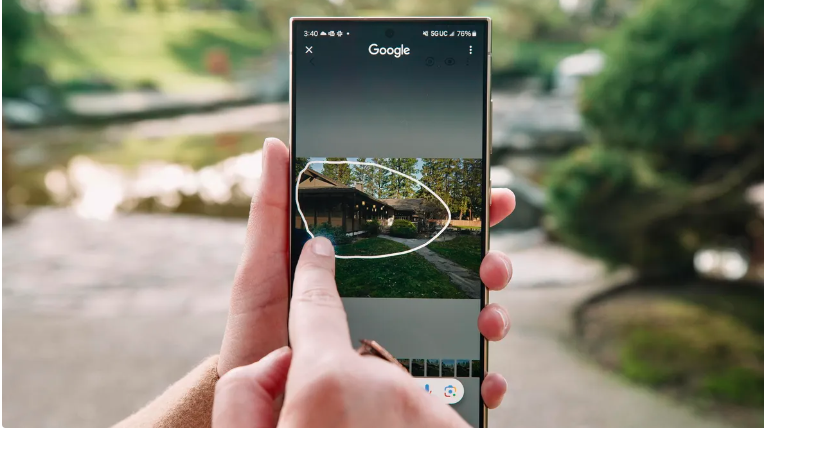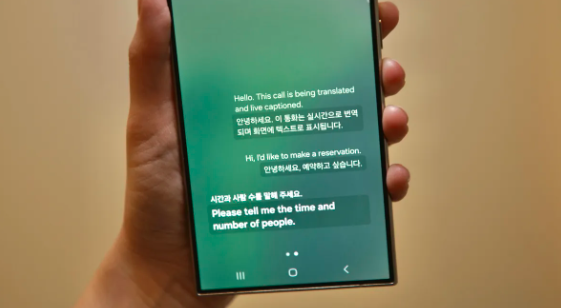Samsung’s new Galaxy S24 smartphone series has a bunch of nifty AI-powered tools and features. Here’s how Galaxy AI compares to rivals.

The latest Samsung Galaxy S24 series smartphones are packed with advanced AI-powered features. Among them, Circle to Search looks particularly useful, while Generative Edit appears to have the ability to manipulate reality. These tools are part of the Galaxy AI suite, which offers a range of features and utilities to simplify everyday tasks, boost productivity, and facilitate content creation.
Galaxy AI is Samsung’s attempt to bolster its S24 series with software features that are powered by generative AI, which catapulted into the mainstream last year when OpenAI’s ChatGPT chatbot went viral. Samsung and its rivals are betting AI can breathe new life into the stagnant smartphone industry, which has seen sales slowing over the last several years.
The Galaxy S24, S24 Plus, and S24 Ultra are equipped with Galaxy AI, which Samsung claims to be a “comprehensive mobile AI experience.” These AI-powered features (many of which are supported by the Snapdragon 8 Gen 3 chip) are discussed in detail below. However, Samsung is not the only one with AI aspirations. Here’s a comparison of some of Galaxy AI’s major features with those of two of Samsung’s main rivals, Google and Apple.

Samsung Galaxy S24 AI features
Live Translation: Samsung’s new live translation tool is perhaps the company’s most compelling AI feature. As the name suggests, the tool can translate a live phone call in real-time voice and text between two different languages. Live translation supports 13 languages and 17 dialects, allowing two people to have a basic conversation even if they don’t speak the same language. (Voice recorder has Transcribe Assist that also translates.)
Interpreter: This is similar to Live Translation, but it’s focused on translating a conversation into just text that’s shown on a split-screen. The view is arranged so that the people talking can stand face-to-face and read the text transcription of what the other person said. It also works without cellular data or Wi-Fi.
Google Pixel 8 AI Features
Last year, the launch of Google’s Pixel 8 marked the beginning of an AI arms race among phone manufacturers. Google had already been marketing AI as one of the key features of the Pixel 8 even before Samsung’s S24 launch. While generative AI capabilities are a recent addition to mobile phones, AI has been an essential component of tasks like voice recognition and image processing for a long time.

Deciding between the Galaxy S24’s features and the Pixel 8’s tools is likely a matter of personal preference. Interestingly, some of the AI-powered features of Galaxy S24 such as Circle to Search, resulted from a collaboration between Samsung and Google. These features will eventually become available on the Pixel 8 series.
The Magic Editor is a photo editing tool that utilizes generative AI and AI processing techniques to help people achieve complex photo edits without requiring professional skills or expensive third-party apps. It offers more than just basic photo adjustments such as brightness and contrast. With the Magic Editor, you can easily reposition people, enlarge buildings, remove strangers from the background, and even create entirely new backgrounds from scratch.
Best Take: This is one of the most significant AI tools in the Pixel 8 lineup. It lets you swap a person’s face from another image in a series of photos. You can produce a single image where everyone is looking at the camera and smiling, and doesn’t have their eyes closed, if that’s what you want.
Where’s Apple’s iPhone Generative AI?
Though iPhones have relied on AI for years to improve camera processing and yield better-looking photos and videos, Apple’s handsets don’t natively have generative AI features in the same vein as Google’s or Samsung’s tools. But it wouldn’t be surprising if Apple went in the same direction.

In fact, it’s widely expected that the next iPhone will follow in Google’s and Samsung’s AI footsteps. Rumors suggest Apple will bring generative AI into its iPhone 16 series in a big way, particularly when it comes to making Siri smarter and more capable.
Boomberg’s Power On newsletter reports that iOS 18 will incorporate AI technology to enhance Siri and the Messages app.
According to a report by The Information in September, Apple intends to use large language models (LLMs), a crucial component of generative AI, to enhance Siri’s intelligence. The report suggests that the LLM feature will be released with an iPhone software update scheduled for next year. This timeline would align with the release of Apple’s next mobile operating system, iOS 18, in September, which is expected to come pre-installed on the upcoming iPhone 16.
According to reports, Apple is currently engaged in discussions with Google to explore the possibility of licensing the company’s Gemini AI models. This would enable the iPhone 16 to incorporate generative AI features, such as writing essays and creating images upon receiving prompts. While Apple has not disclosed how it intends to integrate AI-based tools into its future iPhones, it is clear that the company is dedicated to leveraging this emerging technology.













